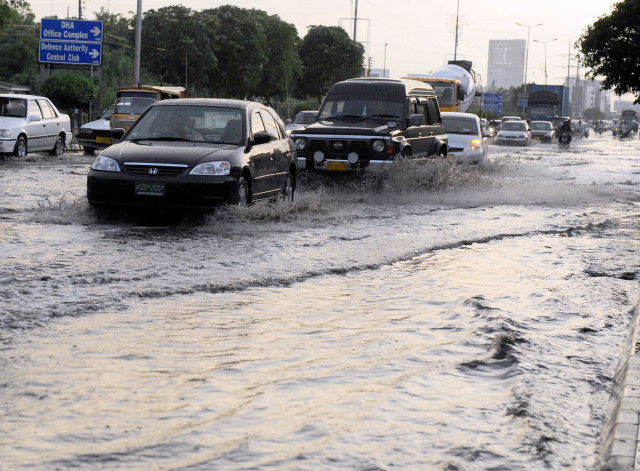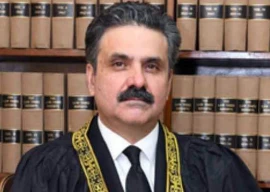
The absence of a technical mechanism and engineering solutions and ignoring the levels of storm water drains and sewerage infrastructure, besides the ground level of plots and constructed units, resulted in this catastrophe.
During the reconstruction and improvement process the levels of most roads and streets in the city have been raise, resulting in plots and constructions being on a lower level, causing them to be flooded during the rains.
Independent infrastructure for storm water drains and sewerage was laid but unfortunately, with the passage of time the infrastructure for storm water drains were converted into open drains and used as sewerage drains, despite the existence of an existing sewerage system. This resulted in the destruction of the storm water drains and a negative impact on the sewerage system.
In addition to separate storm water drains in the localities, around 36 large storm water nullahs are also present but are currently being used as sewerage drains and are full of garbage. Despite spending millions of rupees every year, these nullahs were never cleaned and at some points the width of these nullahs has been narrowed due to encroachments, resulting in the flow of sewerage and rainwater being obstructed.
Heavy Rain: Man killed in roof collapse
The embankment of Thaddo Dam, an important water reservoir for the surrounding villages and the adjoining Lath Nullah, was washed away recently, causing inundation of nearby villages and localities, including some colonies on the other side of Super Highway such as Saadi Garden.
During the last two decades the functioning of local government institutions and other civic agencies has deteriorated. Competent, experienced and dedicated functionaries were ignored when it came time for postings and promotions. Most of the existing functionaries, especially those with experience in the fields of finance, administration management and engineering, retired. The result of this is evident in the form of the aftermath of the downpour.
Now the time has come for a separate feasibility study to undertake three projects for the city with the assistance of foreign aid. These projects are the construction of a new, comprehensive and integrated storm water drainage system for the city, a special one-time project to conduct a complete cleaning of the 36 large nullahs of the city, including removal of encroachments and garbage and strengthening of the nullahs, and the expansion or laying of new infrastructure for an internal sewerage system and a proper disposal system, either through a new system or via the existing bulk sewerage disposal system.
Centre will help Sindh compensate Karachi rain victims: PM Abbasi
To avoid the occurrence of a catastrophe of this scale in the future, it is necessary for the authorities to identify, ascertain and assess, through a detailed study, existing bottlenecks, damages and list all each street and lane that was inundated by rainwater as well as sewage water that needs to be addressed.
Over flowed storm water drains, nullahs and drains should also be identified. The authorities responsible for this study are the Karachi Metropolitan Corporation, six district municipal corporations, Karachi district council, 250 union committees and union councils through their secretaries, besides the Karachi Water and Sewerage Board, Sindh Building Control Authority, Karachi Development Authority, Malir and Lyari development authorities, Karachi Port Trust, Pakistan Railways, Defence Housing Authority and seven cantonment boards in the city.
The district administration and subordinate functionaries, including assistant commissioners and mukhtiarkars, should also play their due role in the pre and post rain situation, as the role of the district administration, is defined also in the Disaster Management Contingency Plan.
'Post-rain situation is not as bad as is being portrayed'
The government of Sindh should immediately issue directives to conduct the required survey and study by each local body within its jurisdiction, besides the district administration of all six districts of Karachi. Each local body, civic agency and the district administration will submit the report within a fortnight. In this regard guidance shall also be taken from reports in the print and electronic media pertaining to the downpour.
The government of Sindh should also constitute a working group of retired and experienced professionals, engineers, experts, senior faculty members of engineering universities and representatives of different professional bodies, including the business community, to assess the reports.
The writer was the director-general of public relations in the Sindh government






1726054615-0/OpenAI-(2)1726054615-0-270x192.webp)











COMMENTS
Comments are moderated and generally will be posted if they are on-topic and not abusive.
For more information, please see our Comments FAQ